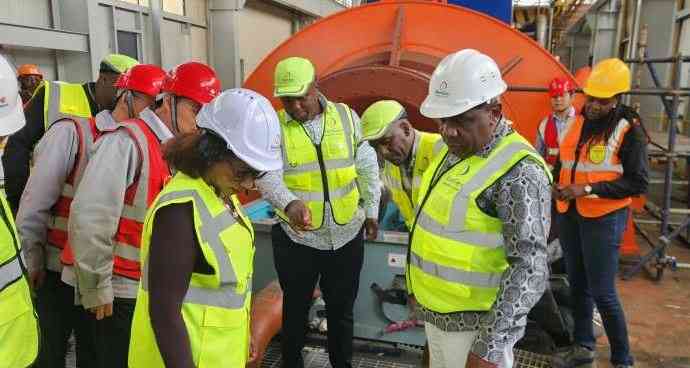As Kenya’s national power capacity dipped in the year to June 2025, private companies ramped up investment in captive power plants, increasing their combined output by 71.3 megawatts (MW), a 13.4 per cent jump that pushed the total capacity to 603.8MW, up from 532.6MW in 2024, according to a new report.
This is even as Kenya’s installed electricity generating capacity by plants that feed to the national grid dropped to 3,192MW in the period to June this year, according to the report by the Energy and Petroleum Regulatory Authority (Epra). This is in comparison to an installed capacity of 3,199MW in June 2024.
Companies have been installing captive power plants to reduce energy costs but also meet green goals including reducing emissions. About half of the installed captive capacity is from solar power plants.
“The installed capacity for captive power plants, which refers to embedded electricity generation units owned by commercial or industrial consumers for self-consumption, has been increasing,” said Epra in the report on energy and petroleum statistics for the year leading to June 2025.
Follow The Standard
channel
on WhatsApp
“The period witnessed growth in captive energy capacity, with an additional 71.3 MW installed, bringing the total to 603.8MW. Captive generation remains dominated by solar PV (49.76 per cent) and bioenergy (26.80 per cent), reflecting industries’ continued investment in renewable sources for sustainability and cost efficiency
Other than meeting sustainability goals, firms are also looking to reduce their power costs by installing their own power plants as well as enabling them to improve reliability and avoid outages that affect the grid. Recent review in the regulatory framework also allows companies to export excess power that they produce to the grid and later take the power back for their own use when their power plants are not producing.
While the captive plants are small and scattered across different companies’ premises across the country, the combined capacity is relatively large. The 71.3MW of new capacity from the different plants is equivalent to two geothermal plants being put up at Menengai in Nakuru County with a capacity of 35MW each.
Epra noted that if this capacity was factored in Kenya’s overall installed capacity, it would push it to 3,840MW and account for 15.72 per cent of the installed capacity.
As the installed capacity for captive power plants rose, the installed capacity for major power plants that feed the national electricity grid dropped. This was on account of few power plants that are being developed in the country.
Follow The Standard
channel
on WhatsApp
As Kenya’s national power capacity dipped in the year to June 2025, private companies ramped up investment in captive power plants, increasing their combined output by 71.3 megawatts (MW), a 13.4 per cent jump that pushed the total capacity to 603.8MW, up from 532.6MW in 2024, according to a new report.
This is even as Kenya’s installed electricity generating capacity by plants that feed to the national grid dropped to 3,192MW in the period to June this year, according to the report by the Energy and Petroleum Regulatory Authority (Epra). This is in comparison to an installed capacity of 3,199MW in June 2024.
Companies have been installing captive power plants to reduce energy costs but also meet green goals including reducing emissions. About half of the installed captive capacity is from solar power plants.
“The installed capacity for captive power plants, which refers to embedded electricity generation units owned by commercial or industrial consumers for self-consumption, has been increasing,” said Epra in the report on energy and petroleum statistics for the year leading to June 2025.
Follow The Standard
channel
on WhatsApp
“The period witnessed growth in captive energy capacity, with an additional 71.3 MW installed, bringing the total to 603.8MW. Captive generation remains dominated by solar PV (49.76 per cent) and bioenergy (26.80 per cent), reflecting industries’ continued investment in renewable sources for sustainability and cost efficiency
Other than meeting sustainability goals, firms are also looking to reduce their power costs by installing their own power plants as well as enabling them to improve reliability and avoid outages that affect the grid. Recent review in the regulatory framework also allows companies to export excess power that they produce to the grid and later take the power back for their own use when their power plants are not producing.
While the captive plants are small and scattered across different companies’ premises across the country, the combined capacity is relatively large. The 71.3MW of new capacity from the different plants is equivalent to two geothermal plants being put up at Menengai in Nakuru County with a capacity of 35MW each.
Epra noted that if this capacity was factored in Kenya’s overall installed capacity, it would push it to 3,840MW and account for 15.72 per cent of the installed capacity.
As the installed capacity for captive power plants rose, the installed capacity for major power plants that feed the national electricity grid dropped. This was on account of few power plants that are being developed in the country.
Follow The Standard
channel
on WhatsApp
By Macharia Kamau
